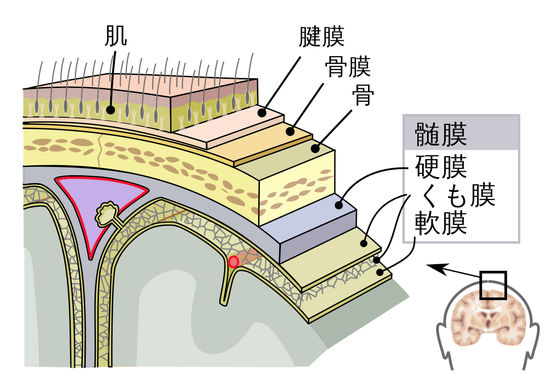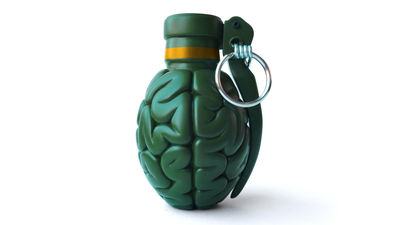Clearly there is an unknown 'direct tunnel' between skull and brain

by Creative Tools
It is the nerve center of living beings, the brain that can be said to be the most important organ alongside the heart, the skull is said to have developed to protect the brain. A research team led by Professor Matthias Narendorf of Harvard Medical School found a small tunnel that directly connects the bone marrow of the skull with the brain and revealed that it is a pathway for immune cells to be delivered when a disorder such as stroke occurs in the brain .
Direct vascular channels connect skull bone marrow and the brain surface enabling myeloid cell migration | Nature Neuroscience
https://www.nature.com/articles/s41593-018-0213-2
Tiny Tunnels Previously Unknown to Scientists Found Between the Skull and Brain
https://gizmodo.com/tiny-tunnels-previously-unknown-to-scientists-found-bet-1828660825
Bone marrow is a cancellous tissue in our bone, a hematopoietic organ with " hematopoietic stem cells " that differentiate into hematopoietic cells . Of the hematopoietic cells made in bone marrow, white blood cells are the cells responsible for immunity. For example, when there is abnormality in the brain, it is thought that immune cells move to the brain by blood flow, but is immune cells repairing the brain produced in the bone marrow of the whole body or bone at a specific site I did not know exactly whether it was produced or not.

by Patagonia
A research team led by Professor Narendorf examined which bone marrow came from immune cells coming to the brain when a stroke occurred, using a mouse that enabled visual tracking of immune cells in the body. As a result, it was found that a large amount of neutrophils, a type of leukocyte, was sent from the skull after a stroke in the mouse. In addition to the skull, neutrophils were sent from large bones such as the tibia (Keikotsu), but the ratio was much more derived from skulls. On the other hand, in the case of heart attacked mice, we also found that neutrophils from skull and tibia were similar proportions. In other words, the skull is not only physically protecting the brain but also acts as a device to actively send immune cells when a brain fails.
In addition, the research team made observations of the mouse skull using a high resolution scanner and a microscope to investigate the process of neutrophils formed in the skull bone marrow towards the brain. Then, it was confirmed that neutrophils migrated through the pathway of the skull of the mouse. This pathway directly connected the membrane called the meningeal membrane, which protects and protects the brain, with the skull bone marrow.

by Jmarchn
From this, the research team thought that "Because the damaged brain can respond promptly, it is carrying out some kind of transmission from the brain to the bone marrow of the skull". It is unknown what exactly how we are communicating, but the research team is concerned that we are exchanging " SDF-1 " which is a type of basic protein molecule.
Similar tunnels discovered in mice were also found in the human skull. However, according to Professor Narendorf, human skull is too thick, he can not observe with a microscope of the same type as a mouse to humans. The researchers comment that from the discovery of this tunnel, we will study how the body works against the inflammation of the brain.
Related Posts:
in Science, Posted by log1i_yk







